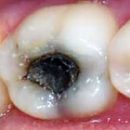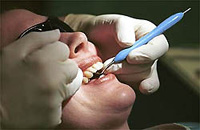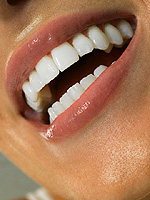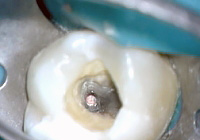Many of us do not think about the role of the teeth until they hurt. What to do if you start to lose your teeth? Who will help you find a beautiful smile?
Content
Bad if there is no teeth
Who is an unfamiliar expression «eats so that already behind the ears is cracking»? But «Crack for ears» While a meal can hardly boast a person with partial or complete loss of teeth. He has to exclude hard food from his diet, either swallowing it, barely after having fallen. And food, as you know, grinding, begins to digest already in the mouth, with large slices, the stomach will have to cope with the tripled force.
Mentioned already «Crash behind ears» is due to the fact that salivary glands are connected in the near-dry region. It is they who produce the development of a very important hormone, which participates in the regulation of calcium exchange, in addition, it affects the rolling and antislesting blood system, the metabolic processes of the liver, stomach and other vital organs. With partial or complete absence of teeth, chewable movements of the lower jaw are limited, which consistently leads to a violation of the function of the salivary glands. From here and there are changes in the composition of blood, suddenly emerging gastric and hepatic dysfunction. And the violation of calcium exchange in the body, among other things, will undoubtedly respond to negative «echo» And on the remaining teeth.
In addition, a person who has no one or more teeth, suffers from the inability to smile wide, laugh, lead a normal conversation, which can adversely affect his communication with others, lead to stress.
If it happened, the conclusion is clear - the prosthetics of the teeth simply need a person to continue normal life.
Prostheses in modern dentistry
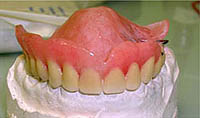 Teeth prosthetics makes it possible to restore remote or lost diseases or injury to teeth. Modern dentistry and new teeth prosthetics technology make it possible to quickly and accurately select the necessary size, shape and color of new teeth to achieve a high cosmetic effect. Now the dental prosthetics ceased to be a long and painful process.
Teeth prosthetics makes it possible to restore remote or lost diseases or injury to teeth. Modern dentistry and new teeth prosthetics technology make it possible to quickly and accurately select the necessary size, shape and color of new teeth to achieve a high cosmetic effect. Now the dental prosthetics ceased to be a long and painful process.
Modern removable prostheses are indigenously different from old, who have used our grandparents. The differences between modern prostheses - in new, durable, flexible and safe materials, as well as in high technologies, allowing the most suitable prosthesis with maximum accuracy.
There are several methods for restoring lost teeth and the normalization of the chewing function, that is, normal feeding of food. In this article we will tell about one of the types of prosthetics of teeth - removable prostheses.
Such prostheses are divided into complete removable and partially removable. They can be lamellar or global. Despite the prejudices of many people, removable prostheses remain today the most common type of prosthetics, since this method is available to the majority and has the smallest number of contraindications.
Plastic prostheses
Full removable lamellar prostheses.
Modern lamellar prostheses did not change much constructively, but for aesthetics stepped far ahead. The basic plate is now not just pink, but with bribed-capillarms, which creates a very natural kind of mucous membrane, and artificial teeth, made according to modern technologies, have excellent appearance and high wear resistance. All this contributes to the achievement of the individual aesthetic effect and reliability of the design of the prosthesis. Full plate prosthesis is the only opportunity to fill all lost teeth (if you do not take into account the implantation of teeth). It is held in the mouth of the appetizer and anatomical features of the jaws.
There is one nuance here - the difference between holding a prosthesis on the upper and lower jaw. Large support area, solid palate and upper jaw structure contribute to good prosthetic fixation. This can not be said about the lower jaw. Little support area, a large number of movable and elastic bridles and folds do not give a prosthesis normally. And very «Big» language makes this task even more difficulty.
On the lower toothless jaw, the patient can offer the so-called «floating» Removable prosthesis that will be swimming, and not tightly sit still. Get used to it for a long time, however, special fixing creams apply to accelerate the process. «Pleasure» This, of course, is not very pleasant, so you should not get closer. On the lower jaw it is necessary to fight for each tooth. Protescent fixation is always better when there is a support.
A partial plate prosthesis is used when one or more teeth are lost. Made it entirely from plastics, with the exception of metal clamps (hooks). The prosthesis turns out an easy and cheap, it does not occupy a lot of space in the mouth, relies completely on the gum. For temporary prosthetics can be simply indispensable.
Burel prostheses
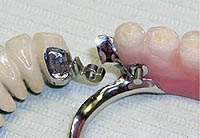 Burel prostheses are radically different from removable lamellar. The total between them is that they can be removed and put on.
Burel prostheses are radically different from removable lamellar. The total between them is that they can be removed and put on.
BUGEL - translated from German means «arc». Instead of a massive, closing almost all the jaw of a plastic basis, a subtle openwork casting, and the supporting clammer fixes the prosthesis, as for specially prepared (global) crowns, and just for living teeth. Burel dentures are comfortable and elegant, do not interfere with the conversation, do not violate diction and do not affect the appearance of an undesirable accent.
For global prostheses, it is necessary to have several stable reference teeth for which the clammer will be cling. This allows you to get rid of the massive basis, which is designed to perform the support and sinking functions. Teeth intended for supports should be chosen very carefully so as not to overload them during operation, otherwise it is possible to damage the supporting device, and subsequently the teeth may drop and fall out.
Modern technologies and high-precision foundry made it possible to produce the most complex global structures in which hidden microams (attachments) are installed - special fastening structures consisting of two jointly working elements. One element is inside an artificial tooth or a prosthetic basis, the second is made with a crown or can be fixed in the preserved root of the tooth. Attachmen are different in their design, the complexity of technical manufacture and materials from which the castle is. All this affects the increase in the cost of technical performance and on the rise in price of the prosthesis in general.
Reliable fixation, convenience in use, beautiful appearance and complete secrecy from others - these are the main advantages of modern sectional prostheses.
Cosmetic Prosthetic
There is another kind of removable prostheses - a small cosmetic prosthesis. They are made in the absence of one or three teeth. They are only one-sided and perform the function of missing teeth, are more often used for temporary, preparatory treatment, the final stage of which will be a bridge prosthesis or installation of implants.

